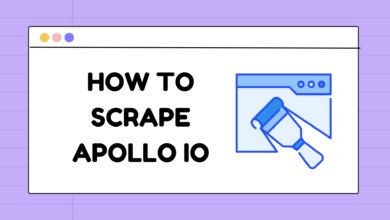The Fixed Cost Pricing Model: A Comprehensive Guide for Businesses

In the world of business and project management, pricing models play a crucial role in determining profitability, client satisfaction, and operational efficiency. One of the most widely used approaches is the Fixed Cost Pricing Model, where a project or service is offered at a predetermined, unchanging price.
This model is especially popular in industries like software development, construction, consulting, and marketing, where clear project scopes and deliverables are established upfront. But how does it work, and is it the right choice for your business?
In this guide, we’ll explore:
✅ What is the Fixed Cost Pricing Model?
✅ Key Advantages & Disadvantages
✅ When to Use Fixed Pricing vs. Other Models
✅ Best Practices for Implementing Fixed Pricing Successfully
What is the Fixed Cost Pricing Model?
The Fixed Cost Pricing Model (also known as Fixed-Price Contract) is a business agreement where the service provider charges a set, predetermined fee for a project, regardless of the time, effort, or resources required to complete it.
Key Characteristics of Fixed Pricing:
- Agreed-upon price before the project starts
- Clearly defined scope of work (SOW)
- No additional charges unless scope changes
- Predictable budget for clients
This model contrasts with Time & Materials (T&M) or Hourly Billing, where costs fluctuate based on actual work done.
See also: Advertise Feedbuzzard: Boost Your Business by Advertising on Feedbuzzard
Advantages of Fixed Cost Pricing
1. Budget Certainty for Clients
Clients prefer fixed pricing because they know the exact cost upfront, reducing financial risks. This is ideal for businesses with strict budgets.
2. Simplified Financial Planning
Businesses can forecast revenue more accurately since the price is locked in, making cash flow management easier.
3. Encourages Efficiency
Since the price is fixed, service providers are incentivized to optimize processes and complete work efficiently to maximize profit margins.
4. Reduces Billing Disputes
With no surprise invoices, client trust improves, leading to better long-term relationships.
5. Ideal for Well-Defined Projects
Works best when project requirements are clear, stable, and unlikely to change (e.g., website development with a set feature list).
Disadvantages of Fixed Cost Pricing
1. Risk of Underestimating Costs
If the project takes longer than expected, the provider bears the financial loss. Poor scoping can lead to reduced profitability.
2. Limited Flexibility for Changes
Any modifications outside the original scope require change orders, leading to renegotiations and potential conflicts.
3. Potential for Lower Quality Work
Some providers may rush work to stay within budget, compromising quality.
4. Not Suitable for Uncertain Projects
If requirements are vague or likely to evolve (e.g., agile software development), Time & Materials (T&M) may be a better fit.
When Should You Use Fixed Cost Pricing?
Fixed pricing works best in scenarios where:
✔ Project scope is well-defined (e.g., building a standard eCommerce website).
✔ Client demands budget certainty (common in government contracts).
✔ The provider has experience in similar projects (reduces estimation errors).
Industries That Benefit Most from Fixed Pricing:
- Software Development (for fixed-scope projects)
- Construction & Engineering
- Marketing & Advertising (e.g., logo design, SEO packages)
- Manufacturing (bulk order pricing)
Best Practices for Implementing Fixed Pricing Successfully
1. Define the Scope Clearly
- Use a detailed Statement of Work (SOW) to outline deliverables, timelines, and exclusions.
- Avoid vague language to prevent misunderstandings.
2. Include a Change Order Clause
- Specify how additional work will be billed to avoid disputes.
3. Estimate Costs Conservatively
- Factor in potential delays, revisions, and contingencies to avoid losses.
4. Use Milestone Payments
- Break payments into phases (e.g., 30% upfront, 40% mid-project, 30% on completion).
5. Choose the Right Clients
- Fixed pricing works best with clients who have clear expectations and minimal scope changes.
Conclusion
The Fixed Cost Pricing Model is a powerful tool for businesses that deal with predictable, well-defined projects. It offers budget certainty for clients and streamlined financial planning for providers, but it also comes with risks if not managed properly.
By clearly defining scope, estimating costs accurately, and setting proper change management protocols, businesses can leverage fixed pricing to build trust, improve efficiency, and boost profitability.
Does your business use fixed pricing? Share your experiences in the comments!




